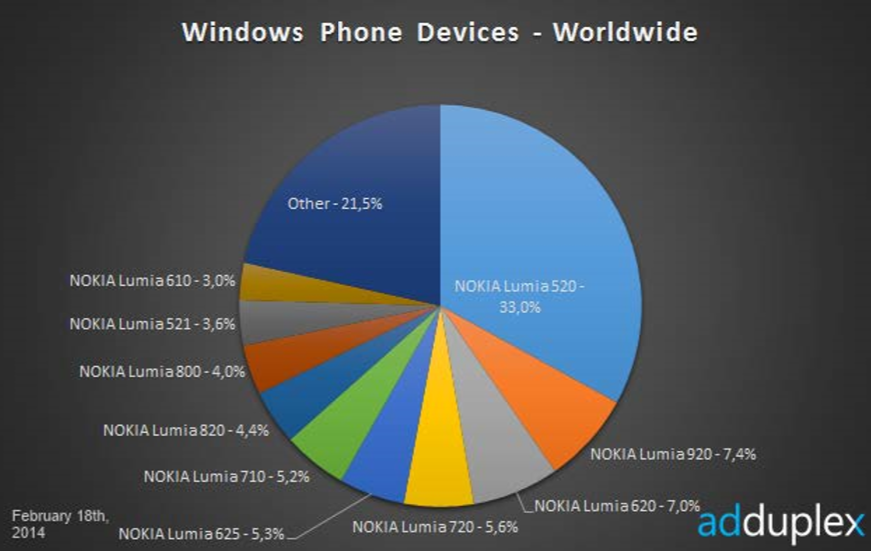One year later, the Nokia Lumia 520 owns the Windows Phone market

The Lumia 520 (and T-Mobile’s lesser known variant, the Lumia 521, in the US), was the sleeper hit of 2013 for Windows Phone 8. Announced nearly one year ago at Mobile World Congress, it seems apropos to see what it’s accomplished in that 12 months.
As it turns out, we don’t think anyone predicted just how strong the Lumia 520 would have become. Due to its low cost, where it’s often found well below $90 off-contract, great build quality and all around solid user experience, the Lumia 520 has become representative of the Windows Phone ecosystem.
While that’s noble, it does continue to highlight Nokia’s – and to a greater extent, Microsoft’s – problem of gaining traction in the high-end market. Indeed, Microsoft and developers were caught off guard, catering to the flagship devices when the ecosystem was driving towards budget phones. As a result, we have far too many top tier games that can’t run on the most popular device.
Just how popular is this Lumia 520? Here’s the Lumia 520 compared to all of the Windows Phone market share, accumulated by advertising provider AdDuplex (blog.adduplex.com), for the month of February, hot off the presses. (Numbers in parentheses represent change from last month, where available.)

- Global 33% (+2%)
- US* 42% (+2%)
- UK 40% (+2%)
- Brazil 40%
- Canada 27%
- China 12%
- France 40% (January)
- Italy 30% (January)
- India 43% (January)
- Russia 22%
- Spain 46%
*US market with Lumia 520 and Lumia 521 combined
Get the Windows Central Newsletter
All the latest news, reviews, and guides for Windows and Xbox diehards.

Daniel Rubino is the Editor-in-chief of Windows Central. He is also the head reviewer, podcast co-host, and analyst. He has been covering Microsoft since 2007 when this site was called WMExperts (and later Windows Phone Central). His interests include Windows, laptops, next-gen computing, and wearable tech. He has reviewed laptops for over 10 years and is particularly fond of 2-in-1 convertibles, Arm64 processors, new form factors, and thin-and-light PCs. Before all this tech stuff, he worked on a Ph.D. in linguistics, performed polysomnographs in NYC, and was a motion-picture operator for 17 years.
